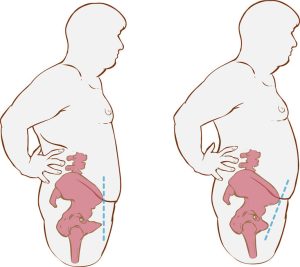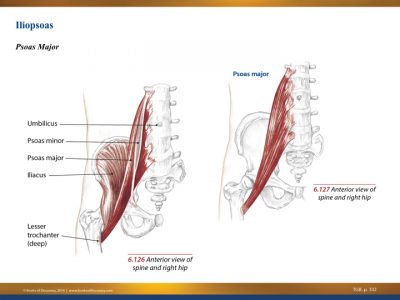The pelvic tilt has two main movements and four movements in total that every personal trainer should be intimately aware of. There are dozens of muscles involved in both the anterior and posterior pelvic tilt. The pelvic tilt is often used as an assessment tool. It can also be used to teach body awareness and proper form for exercise.

- An anterior pelvic tilt occurs when the hips are flexed and the lumbar spine is extended.
- A posterior pelvic tilt occurs when the hips are extended and the lumbar spine is flexed.
Anterior Pelvic Tilt Muscles
- Psoas Major

- Rectus Femoris
- Sartorius
- Tensor Fascia Latae
Lumbar Extension Muscles
- Quadratus Lumborum
- Multifidus
- Iliocostalis
- Longissimus
- Internal Oblique
- Psoas Major
Posterior Pelvic Tilt Muscles
Hip Extension Muscles
- Semimembranosus
- Semitendonosus
- Biceps Femoris
- Gluteus Maximus
- Gluteus Medius
Lumbar Flexion Muscles
- Rectus Abdominus
- External Oblique
- Internal Oblique
Practical Function
When the lumbar flexors and hip extensors engage in tandem, movements, like standing and touching the toes, are executed. But also consider static postures where these muscles may be contracting to execute a posterior pelvic tilt. Sitting in a slouched position, for instance, puts the pelvis in a posterior tilt.
Similarly, when the lumbar extensors and hip flexors work together movements like a deadlift can be executed. But which static postures might contribute to a muscle imbalance where the anterior tilt is maintained even at rest? Someone who sleeps in a soft bed on their back may sink in too deeply, allowing the low back to extend and hips flex. Maybe that same person sits at a desk all day also, but instead of rolling the pelvis under, they are more likely to arch and lean back into a lumbar-supported office chair.

photo credit: www.straightlegsblueprint.com/key-fix-bow-legs-pelvis/
It is important to properly assess a client’s posture and determine if the pelvis rests in neutral, anterior or posterior tilt. When considering the muscles involved and their attachments, an individual who exhibits an anterior pelvic tilt at rest or is exaggerated during a squat assessment will also generally have short lumbar extensors, long lumbar flexors, short hip flexors and long hip extensors. The posterior pelvic tilt will naturally involve the exact opposite of the anterior tilt muscle imbalances.
An easy way to visually assess pelvic tilt is to become familiar with the Anterior Superior Iliac Spine (ASIS) and the Posterior Superior Iliac Spine (PSIS) and where they are in relation to each other. With a neutral pelvis, the ASIS and PSIS are level with each other and horizontal to the ground. If the ASIS is an inch or more lower than the PSIS, then an anterior pelvic tilt is present. Likewise, if the PSIS is lower than the ASIS, then the individual exhibits a posterior pelvic tilt.
A corrective program that encourages the pelvis to rest at neutral can be implemented by releasing and stretching the short muscle groups while simultaneously strengthening the long ones. If a client is programmed without addressing these muscle imbalances, expect their progress to stall out or perhaps injury to occur.
Beverly Hosford, MA teaches anatomy and body awareness using a skeleton named Andy, balloons, play-doh, ribbons, guided visualizations, and corrective exercises. She is an instructor, author, and a business coach for fitness professionals. Learn how to help your clients sleep better with in Bev's NFPT Sleep Coach Program and dive deeper into anatomy in her NFPT Fundamentals of Anatomy Course.


